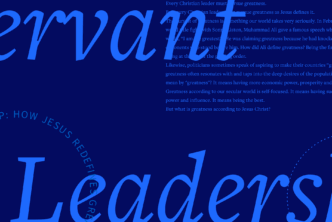“A class on Mary called ‘Mother of God’? At a Protestant school?” My admission that I teach such a class arouses incredulity, because not many transgress the ecumenical divide. Reflections on Mary have remained robust for millennia, but not in all Christian circles (mine included).
Not to say that Protestants are absent from the discussion. For example, Tim Perry’s Mary for Evangelicals provides an in-depth look at the biblical texts, the history of doctrine, and theological implications. He often engages with the insightful and eloquent exegesis of Beverly Gaventa found in her monograph Mary: Glimpses of the Mother of Jesus or her edited volume with Cynthia Rigby, Blessed One.1
Scot McKnight’s The Real Mary situates the biblical Mary historically to show her exemplary faith.2
More recently, Courtney Hall Lee brings a womanist reading to the conversation in Black Madonna: A Womanist Look at Mary of Nazareth, and Alicia Myers devotes significant sections to Mary in Blessed Among Women: Mothers and Motherhood in the New Testament.3
Such eloquent and important work has not, I’m afraid, received a sustained hearing. Passing strange, it seems to me, for the culture at large as well as the Church has been captured by the crisis of women’s experience. In the era of -#MeToo, the young pregnant woman at the fulcrum of the Christian story has much more to say.
For my students, however, she is not a go-to option. If I had a penny for every time I was asked about the canonical view of women, gendered implications of the fatherhood of God, gender roles in marriage, and women in the ministries of the church, I’d be a millionaire. Yet those conversations primarily remain circumscribed within the contentious proof-texts in the Pauline corpus. My suggestion to consider Mary offers a previously unconsidered pathway.
The fact that God became incarnate through a woman shapes all of Christian theology. The implications are vast, I’ve discovered, but here I’ll give examples of those that have proven to be most pedagogically powerful.
At the beginning of every session in the Mary class, we say together Mary’s Song, the Magnificat. A few weeks into the semester, some of the more musically gifted students begin to lead us in chant, and by the end we have become a choir of creative polyphony. By memorizing this text, the words root their way into our hearts and come up persistently in our conversation.
Luke sets Mary as one of the prophets, who looks back to affirm the heart of God from Israel’s past and who looks forward to preview what will be true of the ministry of her son. Like a multifaceted jewel, at times the Magnificat comforts us when we feel downtrodden; at others it calls us to champion the oppressed. When conversations about race and poverty are politicized and fraught, the Magnificat is our centering tether. And when we are tempted to become self-righteous in the idea that we are on the right side of history, it challenges us to ask in what ways we are the mighty, the full and rich who need to be toppled.
Our class also becomes united in our awe for the theological power of the incarnation. The text and tradition never waver on this point. The Son of God was conceived; the Son of God was born. God could have redeemed humanity in whatever way would be consistent with the being and character of God. God was not constrained by the necessity that salvation play out this way, which shows even more strikingly God’s choice for this method.
The evangelists, too, had choices. Matthew and Luke could have passed over the story of Mary and Joseph—as do John and Mark—but they chose to include it in their narratives. Their readers would have been familiar with the stories of the gods impregnating human women, and in telling the story they invoke the association. Are their accounts examples of protesting too much, with the possibility of illegitimacy lurking in the background? 4
They could have avoided such questions if they would have remained silent about Jesus’ birth. But they did not.
Our students come to see that Matthew and Luke were taking a risk, and then ask why they did so—and why God did so. The birth of the divine Messiah shows God’s participation in the fullness of the human condition from conception to death; he assumes our entire journey. But to show the birth of God confirms in a different way the humility of God. Many texts argue for the servant nature of Christ, chiefly in the cross. God’s willingness to be born similarly shows God’s willingness to become vulnerable on our behalf.
Finally, Mary’s story also corrects a common heretical perception of God. One of my classes includes a unit on theological language—how to speak rightly about God. I usually begin with this question: “Is God male?” I’m intentionally ambiguous, specifying neither Father, Son, nor Spirit, and intentionally blunt. I get a surprising number of immediate positive answers. We call God “Father”; does that not mean that God is male? Mary Daly’s concern still has currency.
No, I say; both text (John 4:24) and tradition affirm God as spirit. God is not created; God the Father is not human; and so God the Father is not gendered. Such a statement—God the Father is not male—sounds counterintuitive. The best way to understand the paradox is to focus on the story of the incarnation.
The birth narratives claim a Son has been born to a woman without the involvement of a human father.
While the Old Testament, a handful of times, uses the metaphor of fatherhood to describe the intimate relation of God with Israel or Israel’s king, such language explodes in the New Testament. God is the Father of Jesus Christ and therefore those who are in Christ come to be related to God in the same way. Why, though, is familial language the best way to describe the relationship between God and this man Jesus? Because the birth narratives claim a Son has been born to a woman without the involvement of a human father. The power of God, the overshadowing of the Holy Spirit in a non-sexualized way, has caused the birth of a Son. God is truly his Father, and so for Christians this language is fitting for God.
The name Father, located in this story, achieves two things. First, it affirms Jesus’ unique connection to the God of Israel; they are related as Father and Son. Second, at the central point at which the text affirms God’s fatherhood—divine incarnation through a woman—it also denies that God is male.
If God the Father is not male, then women have a place in a religious system whose God is not Other than them, and men have a place in a religious system in which they are not privileged as more like the divine. Both male and female in the image of God (Gen 1:26–27) in Christ (Gal 3:28) finds its restoration in the particular mode of the incarnation.
Certainly, this discussion raises numerous exegetical and theological questions, which proves my point: Protestant biblical and theological scholarship needs more Mary.
Amy Peeler’s primary research centers on Hebrews, which has prompted her to explore ancient rhetoric, the use of the Old Testament in the New, Israel’s sacrificial system, and atonement.
This article originally appeared in the November 2019 edition of Didaktikos: Journal of Theological Education (Lexham Press, Bellingham, WA), pp. 12–13.
- Beverly Roberts Gaventa, Mary: Glimpses of the Mother of Jesus (Minneapolis: Fortress Press, 1999); Beverly Roberts Gaventa and Cynthia L. Rigby, eds., Blessed One: Protestant Perspectives on Mary (Louisville: Westminster John Knox, 2002).
- Scot McKnight, The Real Mary: Why Protestant Christians Can Embrace the Mother of Jesus (Brewster, MA: Paraclete Press, 2007).
- 3 Courtney Hall Lee, Black Madonna: A Womanist Look at Mary of Nazareth (Eugene, OR: Cascade Books, 2017); Alicia D. Myers, Blessed Among Women? Mothers and Motherhood in the New Testament (New York: Oxford University Press, 2017).
- Origen’s Against Celsus I.28, 32, 39, 69 (citing no longer extant Celsus, True Doctrine, ca. AD 178); Jane Schaberg, The Illegitimacy of Jesus: A Feminist Theological Interpretation of the Infancy Narratives (San Francisco: Harper & Row, 1987), 165–69.




